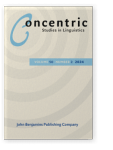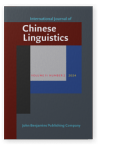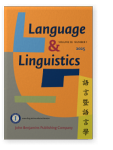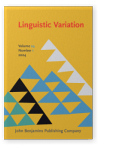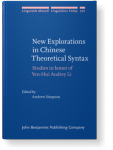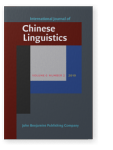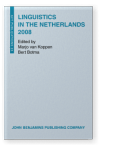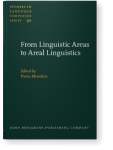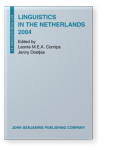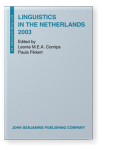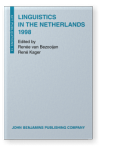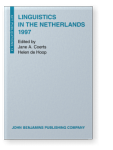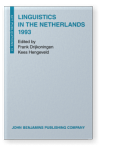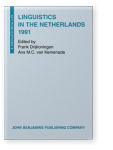Rint Sybesma
List of John Benjamins publications for which Rint Sybesma plays a role.
Journals
ISSN 2213-8706 | E-ISSN 2213-8714
Title
Crossroads Semantics: Computation, experiment and grammar
Edited by Hilke Reckman, Lisa Lai-Shen Cheng, Maarten Hijzelendoorn and Rint Sybesma
[Not in series, 210] 2017. viii, 329 pp.
Subjects Semantics | Theoretical linguistics
2024 Missing and not found: What adjectival agreement reveals about determinerless headlines in Dutch and German Linguistic Variation 24:1, pp. 77–115 | Article
This paper offers novel insights on articlelessness in noun phrases in Dutch and German headlines. Modified noun phrases that lack a determiner in headlines exhibit adjectival agreement that cannot be explained if one assumes an article that is phonologically null or that has been PF-deleted. We… read more
2022 Place and distance: Locative expressions in Mandarin and Cantonese New Explorations in Chinese Theoretical Syntax: Studies in honor of Yen-Hui Audrey Li, Simpson, Andrew (ed.), pp. 77–110 | Chapter
The topic of this chapter is locatives containing a measure expression (like the English 60 yards behind the palace) in Mandarin and Cantonese. More generally, it is about the structure of locative PPs. The hypothesis in Terzi (2010), which says that locatives are modifiers to an N Place (which… read more
2019 限定性和汉语主句 International Journal of Chinese Linguistics 6:2, pp. 325–344 | Article
本文通过对含有光杆动宾结构和体标记的汉语非自足句的考察,提出这些句子不合法的原因在于它们都是非限定句。在对非限定句做出的功能定义的基础上,本文指出事件句的时间理解需要三类抽象“时间”,即事件时间(Situation Time, SitT),声称/指称时间(Topic/Reference Time, TT),和说话时间(Utterance Time, UT)。在此基础上,我们进一步指出限定句的骨架的必有成分包括 CP, TP, AspP 和 VP(即 VP-e)。因此,本文讨论的句子之所以不合法,可以归因于骨架的不完整。同时,本文也检验了几种修补该类句子的手段, read more
2008 How universal is the Universal Grinder? Linguistics in the Netherlands 2008, Koppen, Marjo van and Bert Botma (eds.), pp. 50–62 | Article
2008 6. Zhuang: A Tai language with some Sinitic characteristics. Postverbal 'can' in Zhuang, Cantonese, Vietnamese and Lao From Linguistic Areas to Areal Linguistics, Muysken, Pieter (ed.), pp. 221–274 | Article
This paper deals with an areal feature shared by languages spoken in Indo-China and Southern China, namely, the presence of a modal element in a for these languages a-typical post-verbal position. In this paper we investigate the properties of this element in Cantonese, Lao, Vietnamese and Zhuang.… read more
2004 Exploring Cantonese tense Linguistics in the Netherlands 2004, Cornips, Leonie and Jenny Doetjes (eds.), pp. 169–180 | Article
2003 Forked modality Linguistics in the Netherlands 2003, Cornips, Leonie and Paula Fikkert (eds.), pp. 13–23 | Article
1998 On Dummy Objects and the Transitivity of Run Linguistics in the Netherlands 1998, Bezooijen, Renée van and René Kager (eds.), pp. 81–93 | Article
1997 Realizing End Points: The Syntax and Semantics of Dutch ge and Mandarin le Linguistics in the Netherlands 1997, Coerts, Jane A. and Helen de Hoop (eds.), pp. 207–218 | Article
1993 On the ambiguity of riding tired Linguistics in the Netherlands 1993, Drijkoningen, Frank and Kees Hengeveld (eds.), pp. 129–140 | Article
1991 The Dummy DE in Chinese Resultatives Linguistics in the Netherlands 1991, Drijkoningen, Frank and Ans M.C. van Kemenade (eds.), pp. 131–139 | Article
